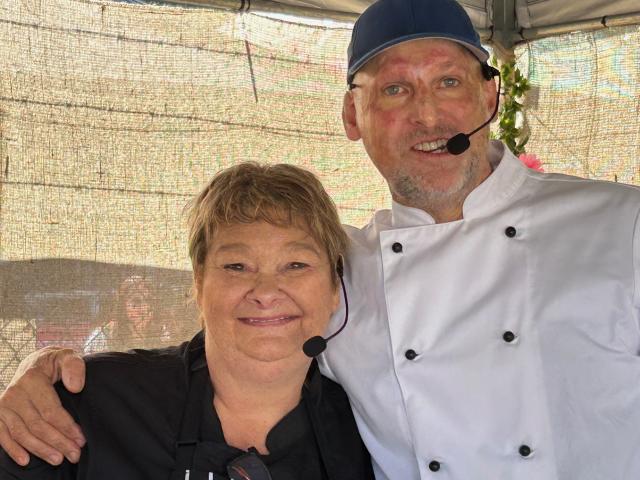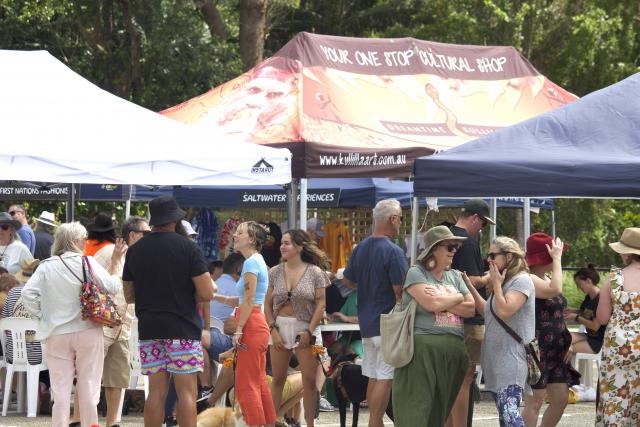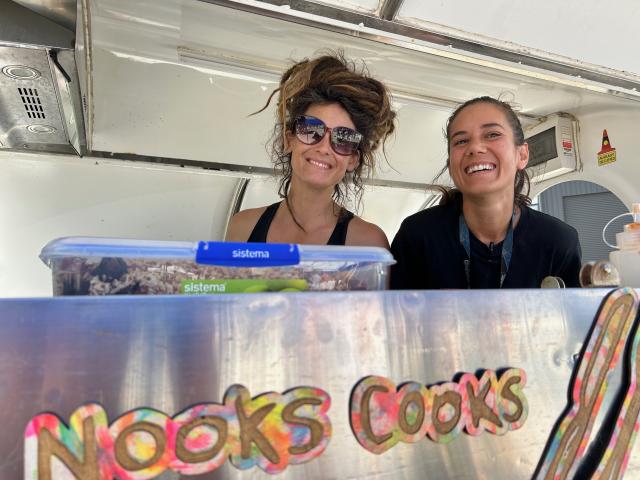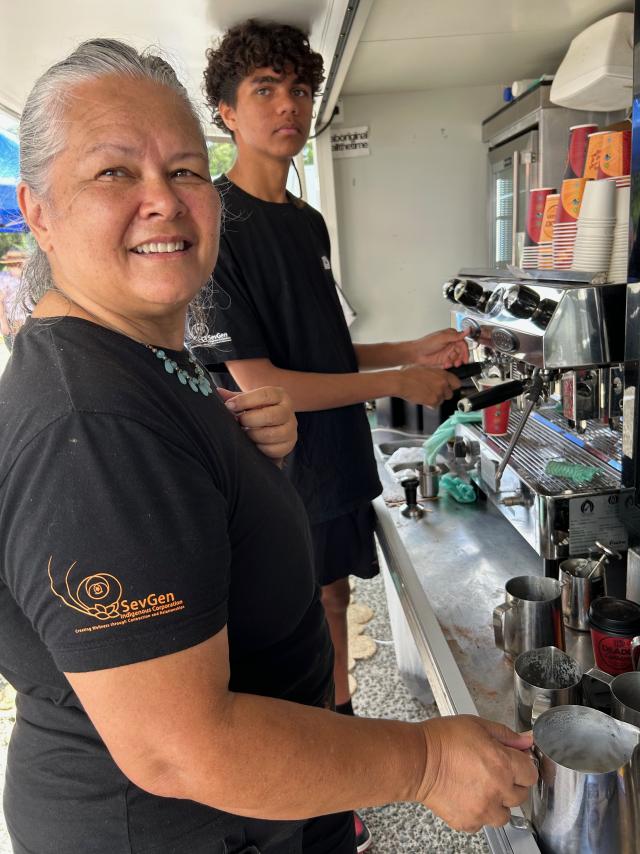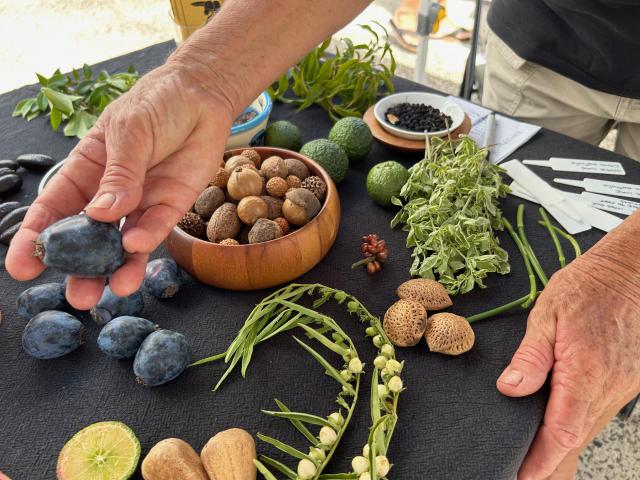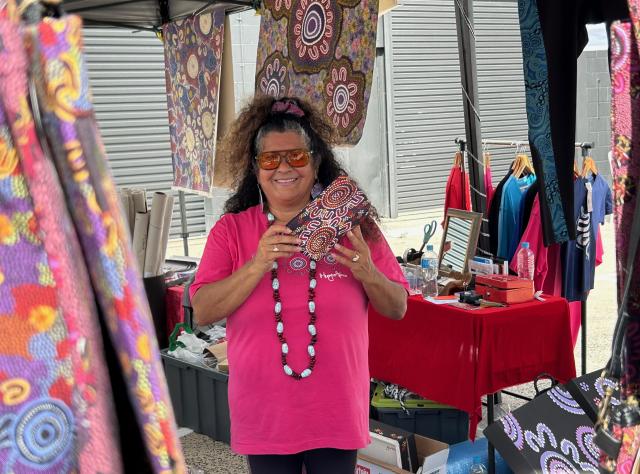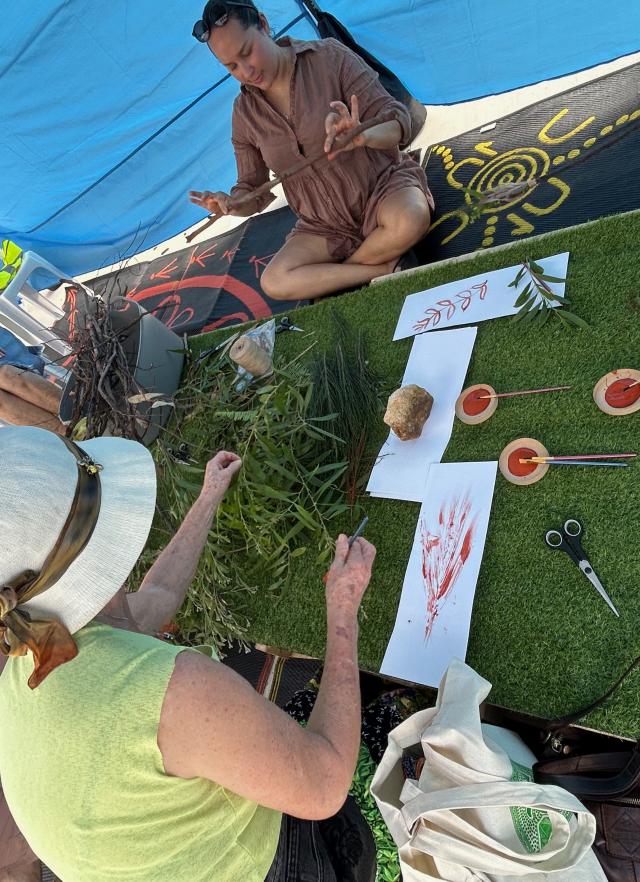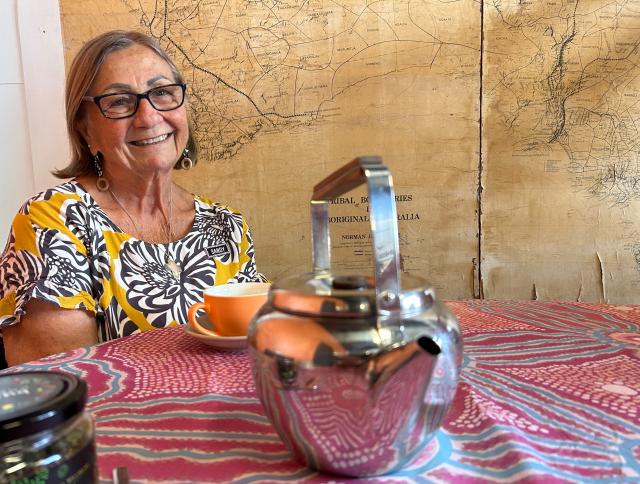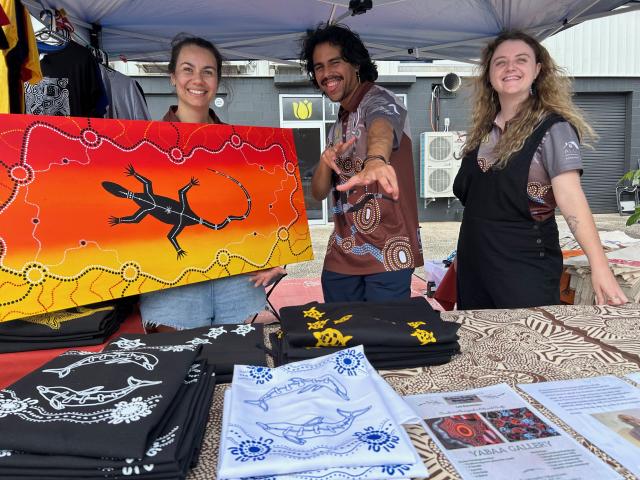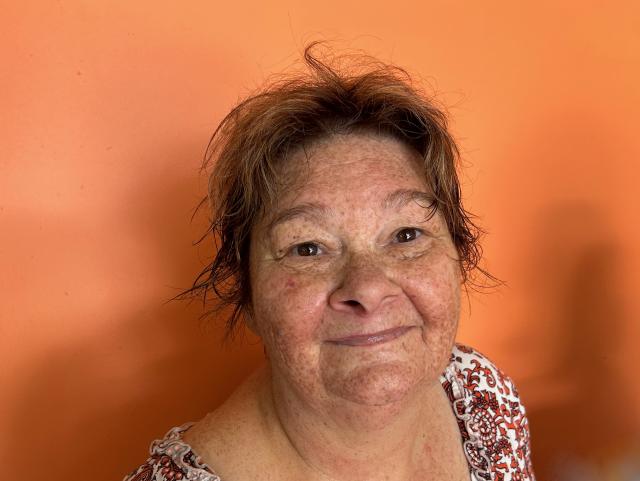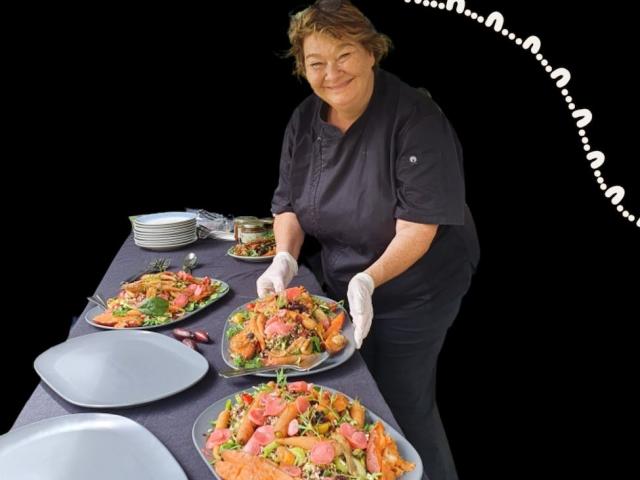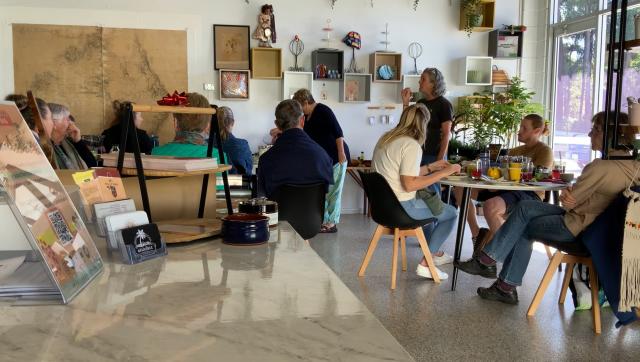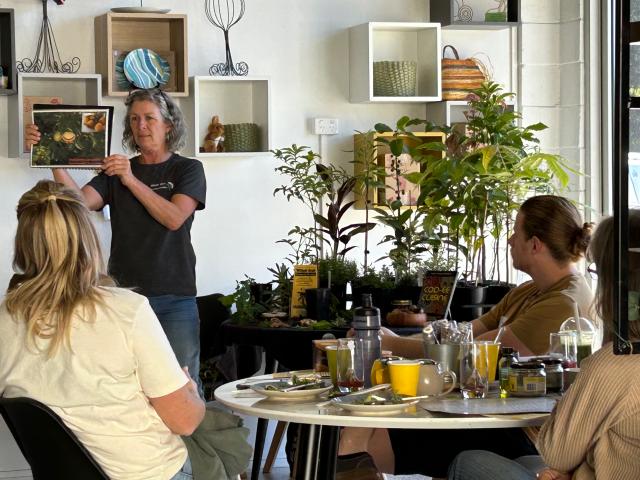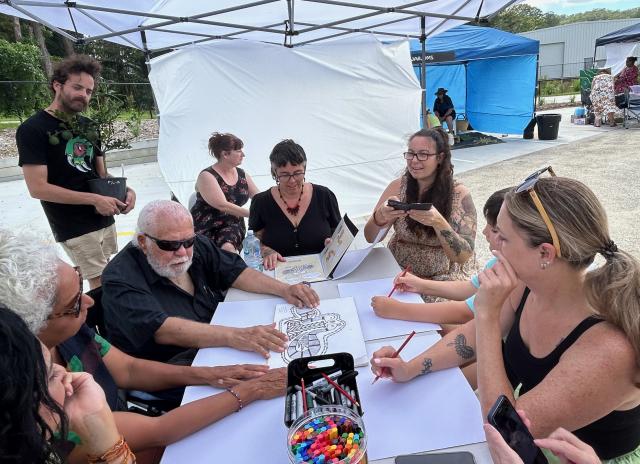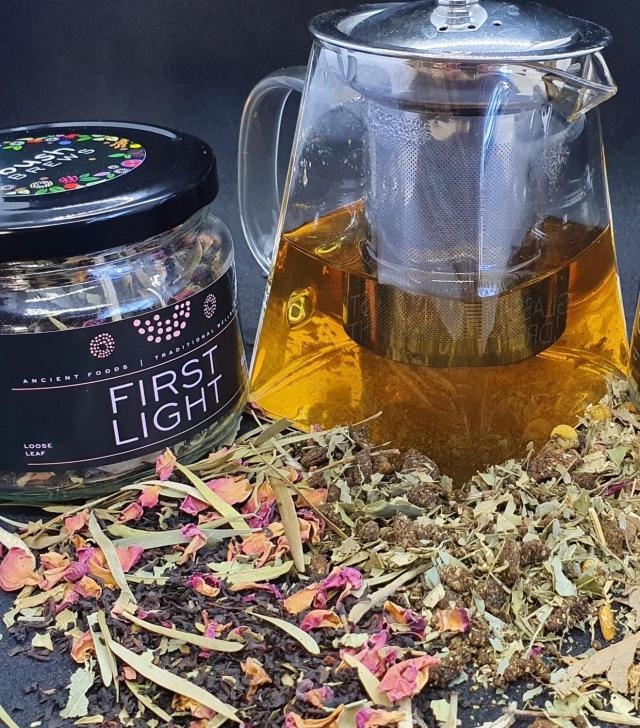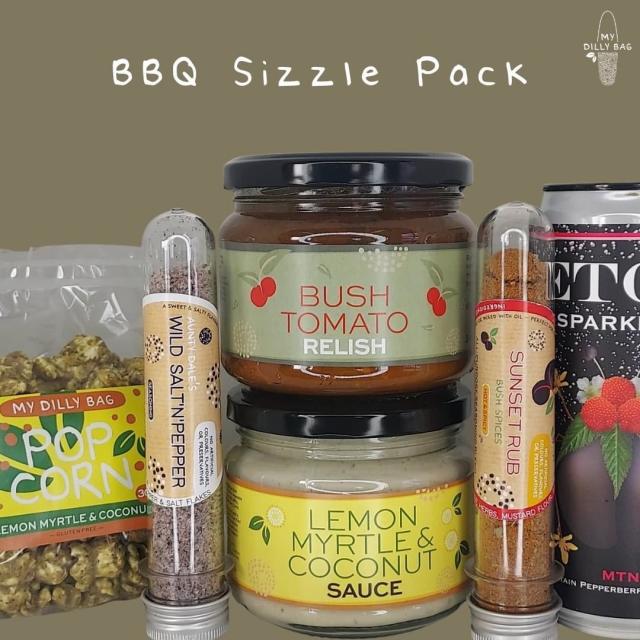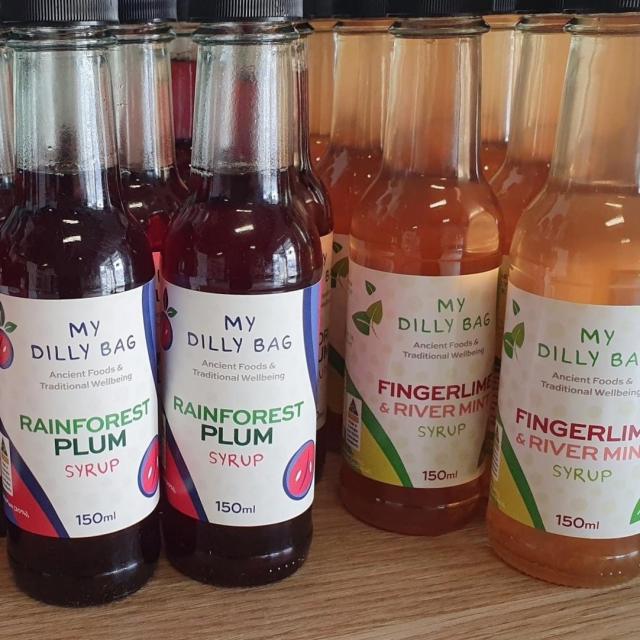PRECEDE
From the outback to the culinary heights of Queensland, Aunty Dale Chapman is an innovator in First Nations bush food as well as art, culture and business. ERLE LEVEY sits down with her at the Gathaa Markets in Forest Glen and talks about a life turning full circle.
BREAKOUT QUOTE
“We have the ideal country-to-consumer model (for native bush food). A lot of people are trying to do it, but they don’t have authenticity, the traceability or the geographical indicators.’’
The emergence of Australian native bush food into shops and onto plates should come as no surprise.
Australians have been incorporating bush tucker into our diet for ages – bunya nut, wattle seed, finger lime and lemon myrtle.
First Nations people have been gathering and using these foods for more than 60,000 years; and the foods a part of the Australian landscape for more than 100 million years.
The realisation is there’s something in bush tucker as far as taste, health and nutritional benefits is concerned.
A significant role in getting native bush food to our tables has been played by the Noosa hinterland’s Aunty Dale Chapman.
Aunty Dale is part of a country-wide movement to have First Nations Bushfood and Botanical Alliance Australia (FNBBAA) as an advocacy and economic development alliance empowering indigenous people and business.
In many ways this is like her legacy … after developing her cooking skills with others, it is now her turn to give back, and to encourage others.
I’m speaking with Aunty Dale at her First Nations business at Forest Glen, My Dilly Bag. It’s a hub of activity focussed on native bush food, indigenous art, craft and culture.
From that has come the monthly Gathaa markets, focussing on the talents of people from within South East Queensland.
Aunty Dale’s life journey has taken her full circle – from growing up in Western Queensland to Noosa’s top echelon of restaurants and now to her own business.
“From slaving over a hot stove … now I’m here,’’ she said.
“It’s nice to share my knowledge and the space. It’s wonderful to share it with others.
“In 2019 I came here at during Covid.
“Covid was the time to re-evaluate and do things. We were able to stay in our own backyard and travel to our regions.
“We like to think people became more aware of natural resources – foods.’’
A celebrated and award-winning chef, cookbook author, public speaker, television personality, and lecturer, Aunty Dale is active in Aboriginal affairs, a member of the Queensland Indigenous Chamber of Commerce, Slow Food International and chair of Stepping Black Indigenous Australia.
An Adjunct Senior Fellow in the School of Agriculture and Food Sciences at the University of Queensland, her goal is to introduce these unique foods and tastes to the public but also to re-introduce her people to using bush tucker again.
She considers traditional food to be an effective weapon in the fight against heart disease and Diabetes 2 which are some of the major health problems affecting many Aboriginal people today.
Together with the likes of Aunty Raylene Brown in the Northern Territory and Aunty Pat Torres from Western Australia, they are establishing indigenous cultural and intellectual property over the full supply chain of bush food production.
In this way they are ensuring it’s grown and harvested by indigenous people according to cultural protocols, and not taken over by multi-national companies.
Aunty Dale attended the 2006 Terra Madre, Slow Food’s international food festival in Turin, Italy. She was the first Aboriginal Australian to attend the event, with Terra Madre being the highlight of the year for the 160 countries that are part of the world-wide movement.
Her involvement with Slow Food goes back a long time. Celebrity chef Matt Golinski assisted Aunty Dale’s first fundraiser to go to France in 2000 to learn more about cooking.
“We’ve known each other a long time,’’ she said. “He encourages me a lot.’’
Born at Dirrinbandi in South West Queensland, Aunty Dale said that, as a family, they had to keep moving to find work.
“For us children, we didn’t want to be taken (away) so it was always a matter of keeping in front of the government.
“My grandfather built shearing sheds at Dirrinbandi.
“We were always going to the show to see Slim Dusty. Mum would doll us all up to see Slim.
“Mum was born at Pinbarren so she took us to live at the coast. We were always down at Boreen Point – that’s where I met my husband.
“We were both kids and eventually went to school together at Noosa High School.
“I did my cooking apprenticeship in Brisbane and from there I worked my way up to head chef at Cafe Le Monde in Hastings St at Noosa.
“Mum was a very good cook and I was always in the kitchen – we would make preserves, jams and some other things. Whatever was in the garden.
“We ate more protein than fruit and vegetables – but we had apples from Stanthorpe, oranges from Mundubbera.
“We ate kangaroo and yellow belly – we would stand at the top of the weir and just grab them when they would pop out of the top.’’
Aunty Dale decided to become an educator on the Sunshine Coast – the first community education counsellor in the region.
“When you are an indigenous person, you’re active. So I set up my business – anything to do with Australian heritage.
“We have the ideal country-to-consumer model (for native bush food). A lot of people are trying to do it, but they don’t have authenticity, the traceability or the geographical indicators.’’
The moment of realisation about the values of bush food was that Aboriginal people have the longest continuous culture in the world.
Now there is an understanding of the benefits of not just the food but the way it is produced. It is not a “take’’ mentality but rather an understanding of the land.
“When I was at Cafe Le Monde I got introduced to this little bush tomato, a central desert tomato as big as your thumb. But it had so much power.
“As soon as I ate it I thought ’goodness gosh’ … why haven’t I seen it before?
“After working in the education department I realised we all knew about dancing and didgeridoo but not what’s sustained Aboriginal people.
“I said to my husband one day ’I’ve got $300 in the bank, I’m going to open the business.’
“He sort of giggled … but he is still giggling 23 years later because I’ve stuck in there, I’ve done the hard yards.
“It’s been really exciting.
“Raylene Brown – that’s who I got the tomato from – said that when you go on country, please don’t just help yourself to stock because there’s a variety of these little bushes and some of them are not edible.
“There’s some different storylines to different things about their connection to country, to the plant, and the stories that go along with that. So we do have to respect that practice of Aboriginal people.
“The rule of thumb for working with Australian sovereign foods and botanicals is that less is more.’’
By necessity, the indigenous Australians had extensive knowledge about the flora and fauna that surrounded them, and it was this knowledge that has sustained them for thousands upon thousands of years.
Native foods such as herbs, spices, fruit, seeds, and nuts are nutrient-rich and high in fibre. Among them are desert quandong, desert lime, ruby saltbush, Tasmanian pepperberry, Moreton Bay chestnut and bush coconut.
Animal sources including kangaroo, emu, crocodile, and witchetty grubs, provide good protein.
The idea of My Dilly Bag, and now the Gathaa markets, came from a strategic plan developed to give exposure to indigenous art, food and culture.
“We called it Sunshine Coast Indigenous Secrets. It was a big secret … no-one knew we existed.
“As soon as we said we were going do a First Nations market, everybody just jumped on board.’’
The first market in December was a great success with more than 300 people attending, about 21 stallholders and three indigenous food vans. There was music, dance, art workshops and a yarning session.
The second market earlier this month was equally successful and the fourth is one planned for April7.
“We’re still buzzing from the incredible turnout. Hosting only our second market, we weren’t quite sure if the word had continued to spread throughout the community.
“The response was overwhelming, with around 350-plus people coming through, so many new faces this time round plus those that returned again and will keep coming back.
“The energy, the support and community connection was beyond what we imagined. This is just the beginning, and we can’t wait to see the Gathaa community continue to grow.
“Our stallholders vary from established businesses to emerging start-ups eager to test the waters and boost their exposure.
“Gathaa serves as a platform for these budding First Nations entrepreneurs, providing them with the visibility they need, especially when they don’t have traditional storefronts or an online presence.
“There has only been positive feedback from our exhibitors. They are thrilled to finally have a regular platform to showcase their products, skills and cultural knowledge as well as opportunity to gather with other businesses, share ideas and get inspired by what they have to offer.
“We will be rotating workshops across future markets as this gives a chance for our First Nations creators to spotlight different talents and cultural offerings as well as giving our participants a chance to dive into a variety of cultural experiences.’’
The shearing sheds may no longer stand at Dirrinbandi but Aunty Dale’s advocacy for indigenous food and culture is growing from strength to strength.
Her remarkable foresight and passion presents an opportunity for everyone to benefit, learn and get a taste for traditional Australian food.

